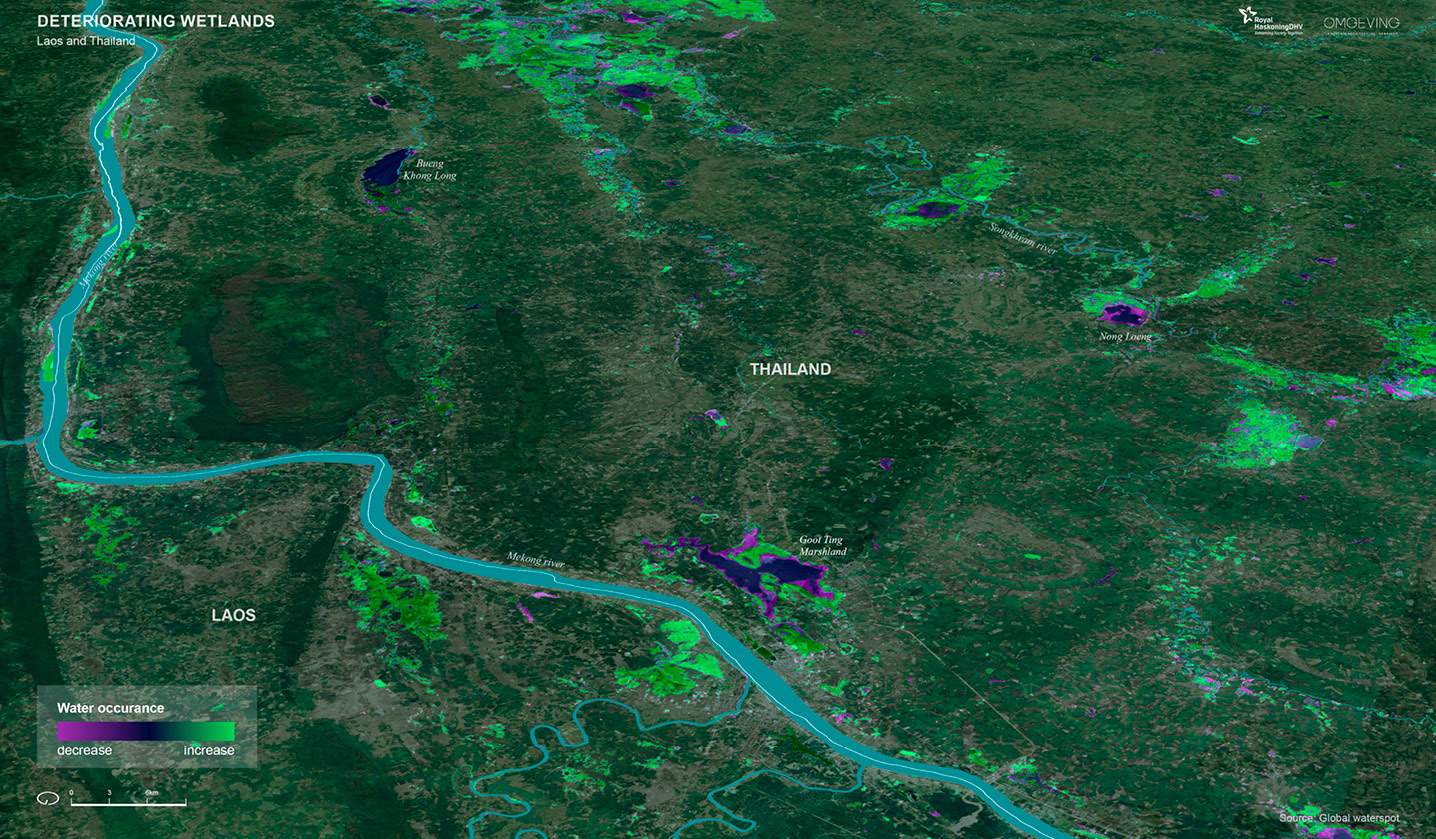Disconnected wetland in Laos and Thailand
Main Problem
Wetland conversion for agriculture and urbanization often disconnects them from rivers and reduces wetland area. Moreover, the construction of hydropower dams has made river flow more constant, reducing sediment and nutrient supply. These changes disrupt aquatic habitats, reducing fish populations and posing a significant risk to Irrawaddy Dolphin habitats.
Challenges
-
Controversial government’s plan of developing nine mainstream dams to boost the country’s economy.
-
Dam development significantly alters the sedimentation and hydrodynamic conditions of the connected rivers.
-
Dams in large rivers disrupt fish migration, life cycles, and access to vital habitats, reducing species diversity due to sediment accumulation and nutrient depletion.
-
Villagers from Laos and Thailand, who depend on the Mekong River for their livelihoods, have reported a declining trend in fishing catches following the construction of a hydro dam.
-
Climate change intensifies rainfall variability, leading to floods and droughts, impacting habitats, species, and agriculture.
Rationale to solve these challenges
-
Healthy wetlands and riparian habitats function as storage areas for water, reducing the impacts of floods and droughts on people and nature. Additionally, the area contributes to improved soil health and fertility.
-
Restored forests absorb heat, which helps to cool the landscape and address increased temperatures.
-
The fisheries in the Mekong River are incredibly diverse, exhibiting seasonal and geographical variations. The general fish migration patterns in the Mekong River form interconnected systems between the lower, middle, and upper regions. Ensuring the proper environmental flow will help protect wetlands and riparian habitats, sustaining aquatic biodiversity and fisheries productivity.
-
If biodiversity rebounds in productive areas outside natural habitats, the overall ecosystem functioning of the riverscape will be improved, and nature-positive, species-rich farmed landscapes are more resilient to climate stress than degraded ones.
NbS Measures
-
Restore flooded forests and riverbanks by re-establishing wetlands, flooded forests, and riparian habitats.
-
Restoration/rehabilitation of riverine wetland ecosystems and increasing the connectivity between the wetlands and the main river (thus allowing water, sediments, nutrients, and fauna/fish to transfer from the river to the wetlands and vice versa). Possibly, this requires an engineering measure. Alternatively, new suitable areas for those wetlands may be found. Protect existing wetlands.
-
Introducing aquafarming to the community as an alternative livelihood offers a solution that is less dependent on river flow variations.
How the NbS solve the issue
-
The wetlands will again become large enough and well connected with the main river. Therefore, they can support a healthy ecosystem and fish population.
-
The connectivity between the river and the wetlands will enhance the natural functions of wetlands, such as sediment trapping through slow water flow and vegetation, promoting sediment deposition, and creating a healthy environment as a spawning ground for aquatic organisms.
-
The wetlands help store surface water and replenish groundwater through infiltration.
-
Increased fish populations will enhance the livelihoods of those dependent on fishing. Rehabilitated wetlands could be utilized for other purposes, such as parks and water storage.
Priority Area
-
Laos: Siphandone Wetlands
-
Laos: Wetlands bordering Mekong river
-
Thailand: Wetlands bordering Mekong River in the eight North-eastern provinces
Deteriorating wetlands in Laos & Thailand
